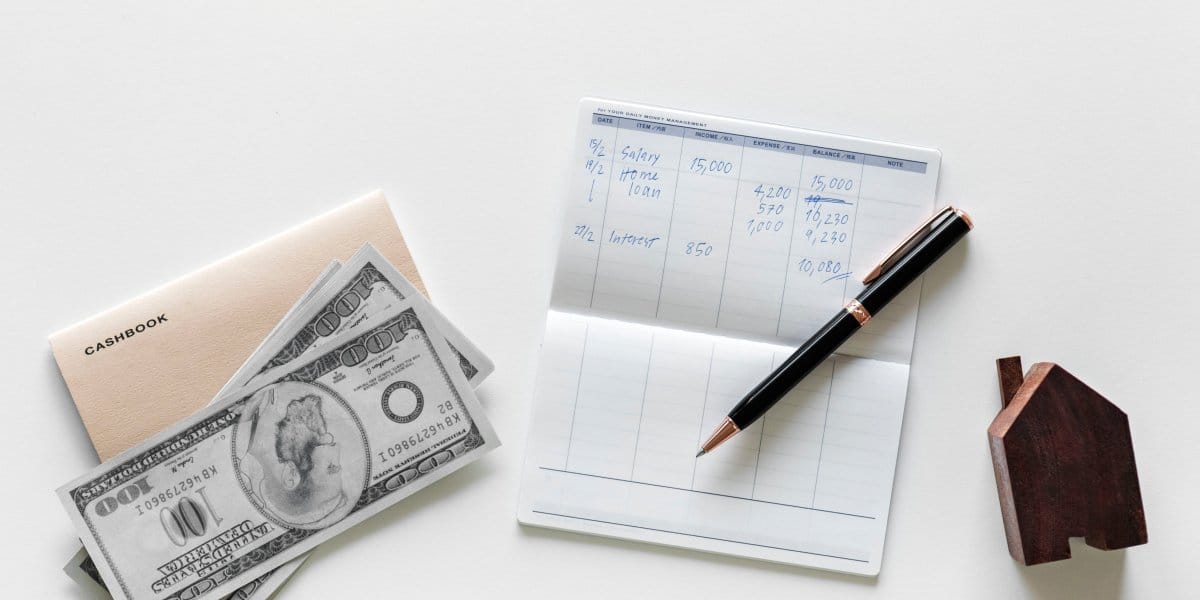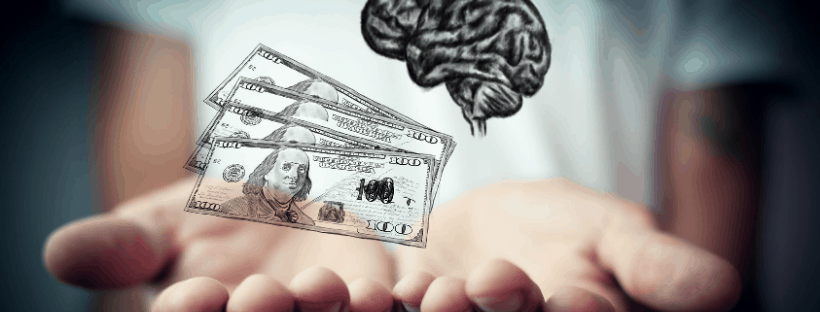Why Is My Money Gone (and where did it go?)

Living paycheck to paycheck sucks
The number of people in this world living paycheck to paycheck is insane. If you’re one of the almost 80% of Americans who struggle to make ends meet, how do you stretch your paycheck to last the whole month?
Here’s my confession: Sometimes, mine doesn’t make it. We’ve had a rough couple of years (tons of medical bills), and lately the hubby and I have made some not-so-great personal finance choices which only makes it worse. Between bad luck and bad decisions, our money is gone before we get it.
With money being so tight, life isn’t enjoyable. A simple stop on the way to work for a cup of coffee can lead to a huge money fight with you and your partner when you’re living paycheck to paycheck.
Suddenly, your head is swimming with all of the “what-if” scenarios, like will I have enough money in the bank to buy a new refrigerator if ours suddenly stops working?
Something’s got to give. So, Andrew and I sat down to re-evaluate our finances. It wasn’t pretty. But it was definitely eye opening to see where our money is going compared to the life we could have if it wasn’t for so much debt.
How should you spend your money?
There are several schools of thought on how you should spend your money. The 50/30/20 rule is one popular methodology. With this rule, it’s suggested that you break down your spending by needs, saving, and wants:
- 50% of your income should go to necessities like groceries, housing, utilities, and health insurance;
- 20% to savings; and
- 30% goes to your “wants.”
Personal finance expert Dave Ramsey also has an opinion on how you should allocate your paycheck. In his book Total Money Makeover, he breaks down your budget like this:
- Housing 25-35%
- Utilities 5-10%
- Food 10-15%
- Transportation 10-15%
- Health 5-10%
- Insurance 10-25%
- Personal 10-15%
- Recreation 5-10%
- Saving 10-15%
- Giving 10-15%
Though I’ve always been a Dave Ramsey fan, I see a fatal flaw in the way he approaches these categories. While this might represent the way you “should” spend your money, it isn’t the reality for most of us because there’s nothing allocated to pay credit card bills, student loans, or car payments. And when you’re living paycheck to paycheck, there isn’t usually anything left to get ahead.
Where does my money go?
Since I’m a huge money-nerd, I created a spreadsheet to break down where our money was going. After entering the numbers, I’m disgusted by how much of our hard-earned paychecks goes toward debt!
We do have 4% of our income automatically coming out of our paychecks and going into an employer-sponsored 401(k) plan, and we set aside money in a Christmas Club account, too, and neither of those are factored into the numbers below. Plus, the cost of health insurance comes out of our paychecks automatically, so that isn’t included here either.
But otherwise, here’s where our money is going:
Mortgage 21%
Our mortgage is set up with an escrow account, so this amount does include our yearly taxes and insurance. And this payment went up by $300 a month (yes, $300 a month!) at the beginning of the year because of a tax error. While we did get the tax error corrected, our mortgage company won’t recalculate our escrow account until January. So, we have to continue paying the higher payment and hope it goes down next year (fingers crossed!).
Utilities 8%
We live in an area with natural gas, so our heating bill is manageable. In Michigan, the winters are sometimes brutal and people who heat with propane often see $400 a month or more in heating bills! I’m thankful for our natural gas because our payment doesn’t even come close. Also included in utilities is our electricity, cell phone bill, internet, Netflix, and the WWE network. (Yes, we’re fans of wrestling LOL.)
Groceries 10%
Though we try to keep our grocery budget down, our spending can quickly spiral out of control if we’re not careful. Making a meal plan and grocery list for the week helps to reign in our spending, but frequent stops for an Icee drink, fountain soda, and snacks can derail our efforts.
Gas for the Car 7%
Living in a rural area means we do a ton of driving. It’s 50 miles round-trip for me to get to work and 80 miles round-trip for Andrew. When you factor in driving Nora to piano lessons, Girl Scouts, and swim practice — plus driving 270 miles (round-trip) to see Andrew’s parents at least once a month — our transportation costs add up quickly.
Insurance & Prescriptions 12%
Our health insurance premiums come out of our paychecks automatically, and they aren’t huge payments (about 3% of our income I think??? <– I should know this, right? LOL). And our house insurance is combined into our mortgage payment, so that doesn’t count here either. So for just car insurance, life insurance, disability insurance, and the ridiculously expensive prescription medication Andrew takes to manage his Factor V blood clotting issue, we spend 12% of our income on insurance and prescriptions.
Giving 5%
I’m embarrassed to admit to you that we only give 5% of our income to charity. Sometimes we give more, but it’s never less than this amount. One of the big things I’m looking forward to when we dump some of these debts is the ability to give more. There is so much need in our community that I want to contribute to.
Credit Card Debt 9%
Who spends 9% of their income on credit card debt? We do. We bought a riding lawnmower on a zero-percent interest special earlier this summer (one of those poor financial decisions I mentioned earlier), and I have no idea what the rest of the credit card debt is even from
Car Loans 10%
We have two car loans. I don’t recommend it because it sucks to have so much of our money going to car payments. We don’t even have fancy cars! Remember those poor financial decisions I mentioned? This was one of them. Last April, we had a crazy snowstorm, and I decided I couldn’t live without four-wheel-drive for another second. We went out and bought a new car… no money down. Stupid. Don’t do that, okay? It only fuels the paycheck to paycheck lifestyle.
Student Loan Debt 6%
Compared to other people, I suppose our student loan debt isn’t so terrible. Though combined, the two of us owe a decent amount. According to Forbes, the average student in the Class of 2016 has $37,172 in student loan debt — we’re not too far off of that number.
Everything Else 12%
After all of our bills are paid, food is on the table, and gas in our cars, we’re left with 12% — which isn’t much. Nora takes piano lessons, and that takes a big chunk, plus this remaining amount has to cover things like haircuts, clothing, going out to eat, and anything else that isn’t a basic bill. It’s no wonder we never have enough money.

How to Get Back on Track
If you didn’t do the math, we’re spending 25% of our income on debt. What could you do if you got a 25% raise? You’d have a bunch more options, right? Between that and our $300 a month increase in our house payment because of the tax error, we’re in quite a financial pickle.
Getting back on track isn’t easy, especially if most of your spending goes to bills and not stuff you can control (like how many pairs of shoes you buy or how many lattes you get each week). But it is possible. I know because we paid off $30,000 in debt in 2016 — it isn’t easy, but it can be done.
The most critical step is to figure out where your money is going compared to what you should be doing with it. Then automate as much as you can because if given the choice, I’ll usually choose to spend money on stuff I don’t need. After our budget meeting, Andrew and I put all of our bills on auto-pay, and setup a direct deposit through our employer to stash away money in a savings account (you can’t miss it if you don’t see it, right?).
Then we’re limiting our discretionary spending by using cash only. Yeah, using cash is inconvenient, but it’s the only way we can stay on track.
Where’s your money?
You can’t turn a blind eye to your money any longer. It’s time to wake up your finances. Follow our journey and join in when you see something that makes sense for your situation.







